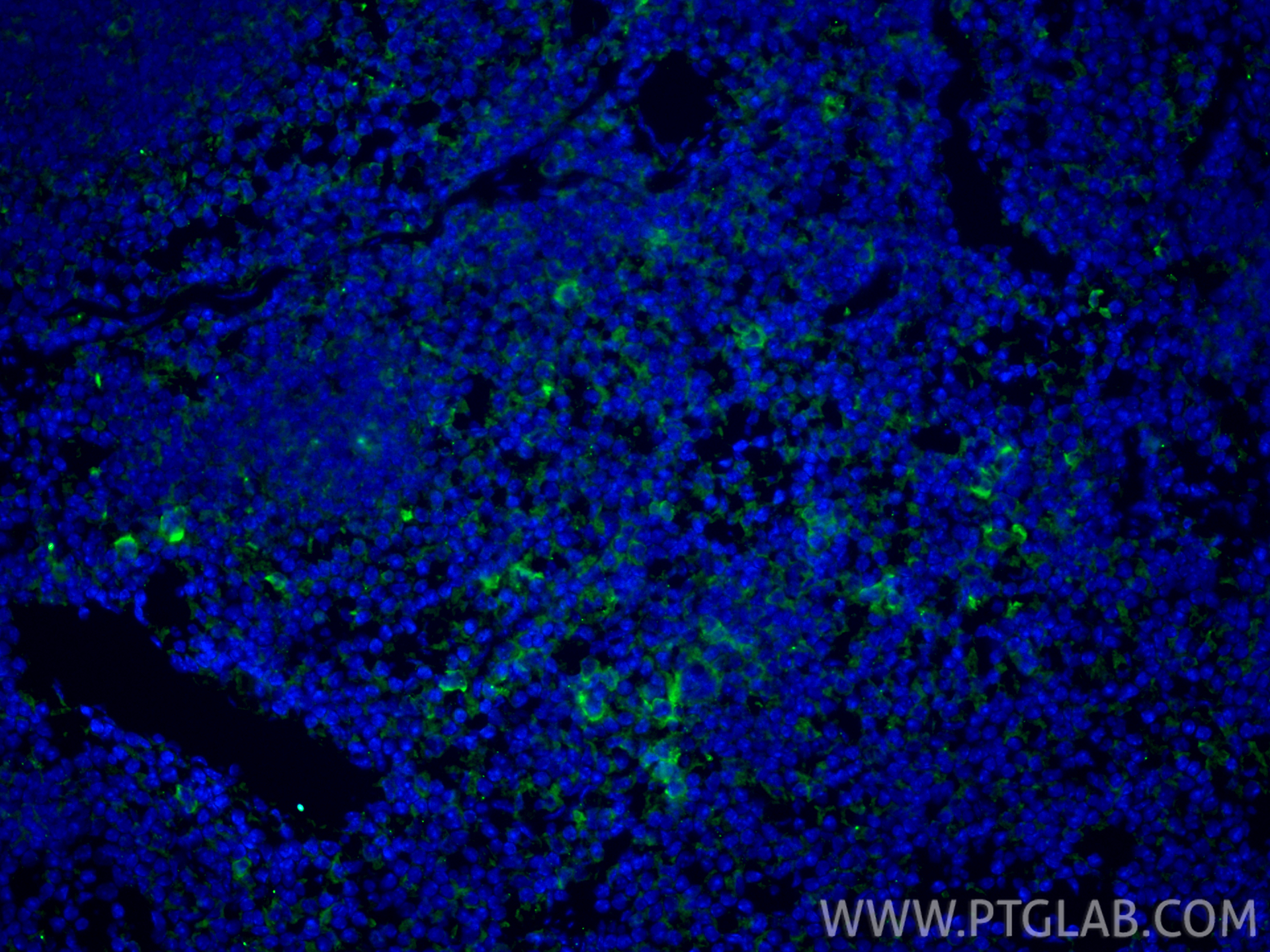验证数据展示
经过测试的应用
| Positive IF-P detected in | mouse spleen tissue |
推荐稀释比
| 应用 | 推荐稀释比 |
|---|---|
| Immunofluorescence (IF)-P | IF-P : 1:50-1:500 |
| It is recommended that this reagent should be titrated in each testing system to obtain optimal results. | |
| Sample-dependent, Check data in validation data gallery. | |
产品信息
CL488-81668 targets F4/80 in IF-P applications and shows reactivity with mouse samples.
| 经测试应用 | IF-P Application Description |
| 经测试反应性 | mouse |
| 免疫原 |
CatNo: Ag28252 Product name: Recombinant mouse Adgre1 protein Source: e coli.-derived, PGEX-4T Tag: GST Domain: 443-644 aa of NM_010130 Sequence: MELSKEETSTLGTILLETVESTMLAALLIPSGNASQMIQTEYLDIESKVINEECKENESINLAARGDKMNVGCFIIKESVSTGAPGVAFVSFAHMESVLNERFFEDGQSFRKLRMNSRVVGGTVTGEKKEDFSKPIIYTLQHIQPKQKSERPICVSWNTDVEDGRWTPSGCEIVEASETHTVCSCNRMANLAIIMASGELTME 种属同源性预测 |
| 宿主/亚型 | Rabbit / IgG |
| 抗体类别 | Recombinant |
| 产品类型 | Antibody |
| 全称 | EGF-like module containing, mucin-like, hormone receptor-like sequence 1 |
| 别名 | 2P18, Adgre1, Adhesion G protein-coupled receptor E1, EGF-like module receptor 1, EGF-like module-containing mucin-like hormone receptor-like 1 |
| 计算分子量 | 102 kDa |
| GenBank蛋白编号 | NM_010130 |
| 基因名称 | F4/80 |
| Gene ID (NCBI) | 13733 |
| 偶联类型 | CoraLite® Plus 488 Fluorescent Dye |
| 最大激发/发射波长 | 493 nm / 522 nm |
| 形式 | Liquid |
| 纯化方式 | Protein A purification |
| UNIPROT ID | Q61549 |
| 储存缓冲液 | PBS with 50% glycerol, 0.05% Proclin300, 0.5% BSA, pH 7.3. |
| 储存条件 | Store at -20°C. Avoid exposure to light. Stable for one year after shipment. Aliquoting is unnecessary for -20oC storage. |
背景介绍
Mouse F4/80, also named as EMR1 and Gpf480, is a 160kd cell surface glycoprotein which is a member of the EGF TM7 family. The F4/80 molecule is solely expressed on the surface of macrophages and serves as a marker for mature macrophage tissues, including Kupffer cells in liver, splenic red pulp macrophages, brain microglia, gut lamina propria and Langerhans cells in the skin. The function of F4/80 is unclear, but it is speculated to be involved in macrophage adhesion events, cell migration or as a G protein-coupled signaling component of macrophages.
实验方案
| Product Specific Protocols | |
|---|---|
| IF protocol for CL Plus 488 F4/80 antibody CL488-81668 | Download protocol |
| Standard Protocols | |
|---|---|
| Click here to view our Standard Protocols |


